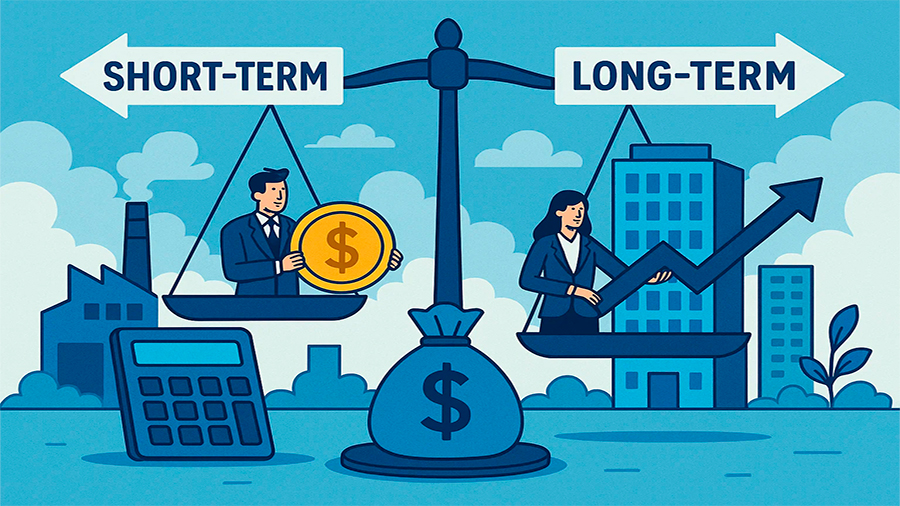Multi-level Borrowing: How Global Firms Structure Debt
In the world of international business, borrowing isn’t just about taking a single loan and paying it back. Global firms often manage multiple layers of financing, each serving a different purpose. These structures are carefully designed to spread risk, lower borrowing costs, and take advantage of market conditions in different regions. The result is a complex web of debt that can look intimidating on paper but, when managed well, becomes a powerful tool for growth and stability.
Understanding Multi-Level Borrowing
Building the Debt Layers
At the core of multi-level borrowing is the idea of stacking different types of loans, credit lines, and bond issues. Each “layer” serves a purpose. Short-term credit might cover working capital needs, while long-term loans fund major projects like factory construction or technology investments. Corporate bonds might finance acquisitions or large-scale expansions in new markets. By having multiple sources, a company isn’t overly dependent on one lender or one repayment schedule.
This approach also allows businesses to react quickly. If interest rates in one market drop, a firm can refinance part of its debt there without disturbing other agreements. In industries like shipping, mining, or tech — where project timelines and cash flow can vary — this flexibility can be the difference between seizing an opportunity and missing it entirely.
Using Currency to Your Advantage
Operating across borders means dealing with multiple currencies. Many firms see that as an advantage. If a company earns revenue in euros but borrows in U.S. dollars, favorable exchange rates can make repayment cheaper. On the flip side, borrowing in the same currency as your main revenue stream can protect you from sudden swings in exchange rates, keeping cash flow predictable.
Some multinational corporations deliberately spread their borrowing across several currencies to balance risk. If one currency weakens, the impact on repayments may be offset by gains in another market. It’s a balancing act that requires constant monitoring and strong treasury management.
Balancing Borrowing Strategies
Short-Term vs. Long-Term Needs
Not all borrowing is created equal. A short-term loan can keep operations running smoothly during seasonal slowdowns or supply chain disruptions. Long-term financing supports strategic investments with returns spread over years. Successful firms often run both types in parallel, ensuring they have quick access to cash while also securing low rates for major projects.
Borrow too much short-term, and you risk being exposed if rates spike or if lenders tighten conditions. Borrow too much long-term, and you might end up paying for unused capital. Striking the right balance is part science, part instinct, and part experience.
Debt as a Negotiation Tool
In global business, debt isn’t just a source of capital — it can be a bargaining chip. Large firms with strong credit ratings can use their debt structure to negotiate better supply contracts, win over partners, or influence regulatory discussions. Showing that you have secured financing for years ahead signals stability to both investors and competitors.
Some companies time their bond issues or loan renewals to align with major business announcements. A new market entry or high-profile partnership, paired with fresh financing, can boost investor confidence and stock performance.

Managing Risks in Multi-Level Borrowing
Geographical Diversification
One of the biggest challenges is that not all markets move at the same pace. Interest rate changes, political instability, and local banking regulations can all affect repayment terms. A country might suddenly introduce capital controls or change tax rules for interest payments, forcing companies to adjust quickly.
To manage these risks, firms diversify debt sources geographically. They might have loans from Asian banks, bonds sold to European investors, and credit facilities from North American institutions. This way, a shock in one region doesn’t cripple the whole operation.
The Role of Green and Sustainability-Linked Debt
In recent years, more global firms have added green bonds and sustainability-linked loans to their portfolios. These tie borrowing terms to environmental or social performance targets. Meeting carbon reduction goals, for example, can lower interest rates. This provides financial benefits while strengthening the company’s ESG profile — an increasingly important factor for long-term investors.
Such debt instruments also open access to new pools of capital. Many institutional investors and sovereign funds require that part of their portfolio be allocated to sustainable finance. By including these in a multi-level strategy, companies can expand their investor base while aligning with policy trends.

Maintaining a Healthy Debt Structure
Keeping It Lean
With so many moving parts, the danger is creating an overly complicated structure. Too many layers can make it difficult to track repayments, manage covenants, or respond to market changes. Leading firms invest in treasury systems and dedicated teams to monitor every component.
Regular portfolio reviews help cut underperforming or expensive facilities. The goal is to keep borrowing diverse but manageable, ensuring each layer adds value rather than complexity.
When Things Go Wrong
Even the best plans can run into trouble. If global markets tighten credit at the same time, refinancing gets harder. Currency swings can turn against you, making repayments more costly overnight. Over-reliance on debt for expansion can put pressure on cash flow, especially if anticipated revenue growth doesn’t happen.
History shows that companies with too much layered debt and little liquidity suffered most during downturns. The takeaway: multi-level borrowing works best when paired with cautious risk management and strong contingency planning.
Conclusion
Multi-level borrowing isn’t about piling on more debt. It’s about structuring it smartly — supporting growth, protecting against regional and currency risks, and allowing quick action when opportunities appear. Done right, it’s a sign of maturity and strategic thinking. Done poorly, it becomes a web of obligations that can drag a firm down. The difference lies in planning, discipline, and adapting as markets shift.

